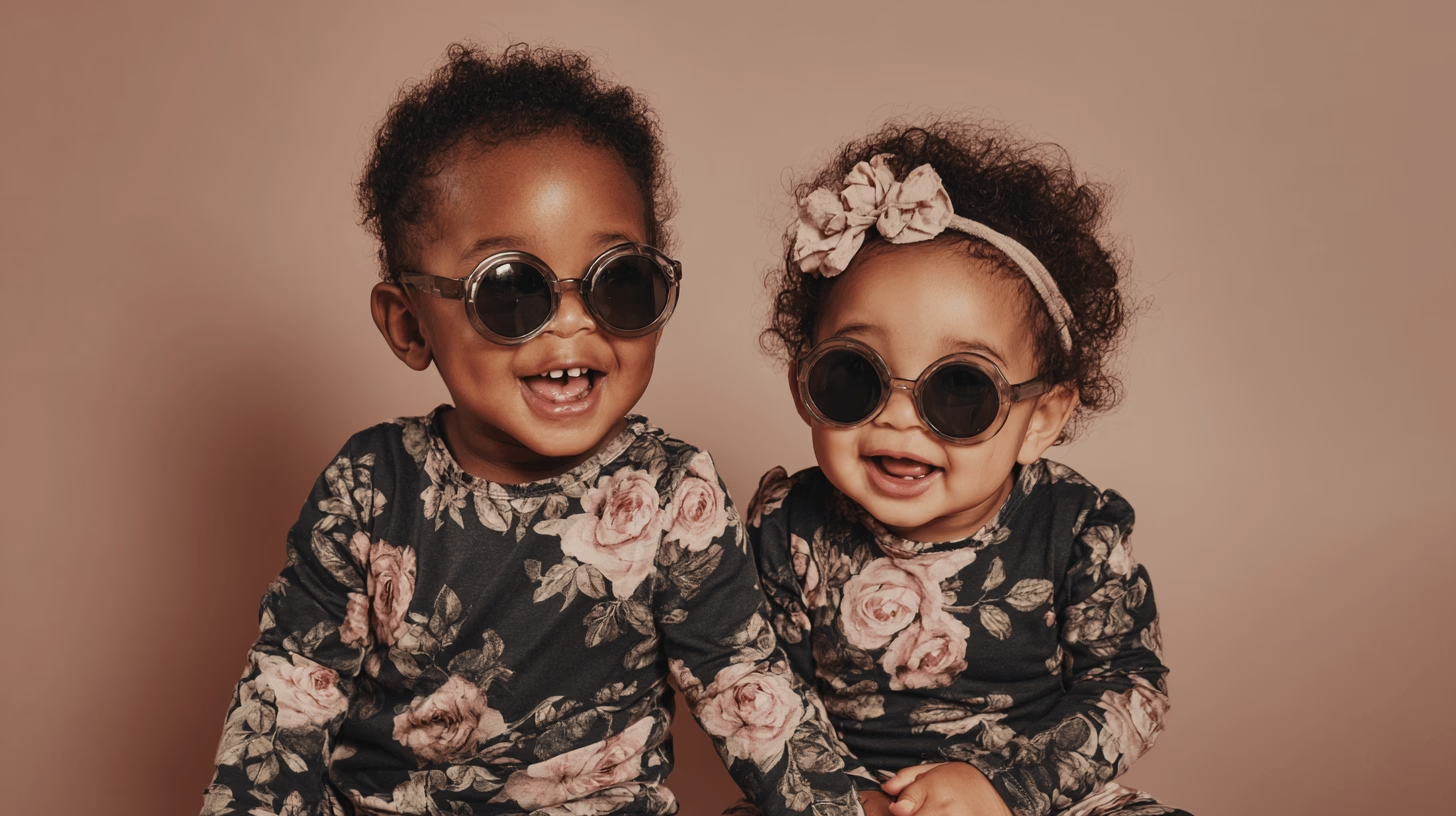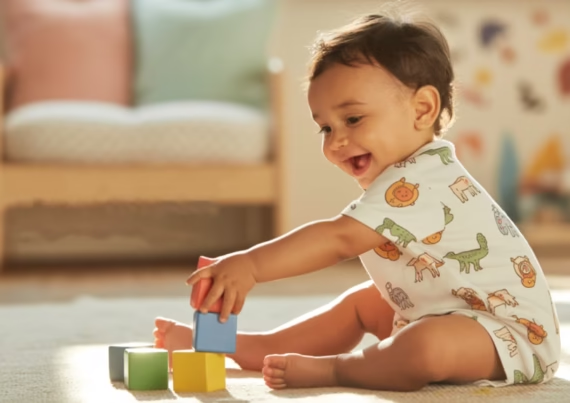The Role of Quality Control in Newborn Clothing Manufacturing: Ensuring Safety and Comfort for Babies

Introduction
When it comes to newborn clothing, safety, comfort, and durability are non-negotiable. Parents want the best for their babies, and manufacturers must deliver garments that meet high standards of quality. But how can manufacturers ensure these vital qualities in every product? The answer lies in rigorous quality control processes. In this article, we will explore the essential role of quality control in newborn clothing manufacturing and why it is crucial for both the well-being of babies and the reputation of the brand. Keep reading to find out how each step of quality control plays a part in delivering garments that parents trust and rely on!
1. Why Quality Control is Essential in Newborn Clothing Manufacturing
Manufacturers of newborn clothing bear a heavy responsibility. The safety and comfort of babies depend on the quality of the garments produced. This is where quality control steps in. It ensures that the materials used, the processes followed, and the final products meet specific standards that keep babies safe, comfortable, and happy.
Safety: Babies’ skin is sensitive and vulnerable, so the materials used in their clothing must be free from harmful chemicals, sharp edges, or defects. Quality control ensures that fabrics are tested for safety, with close attention paid to the absence of toxic dyes, allergens, or harmful additives. Manufacturers must ensure that the fabrics are free from sharp edges or buttons that could cause injury.
Comfort: Newborn skin is delicate and easily irritated. For this reason, newborn clothing must be made from fabrics that are soft, smooth, and breathable. Quality control processes ensure that fabrics undergo softness tests and that the garments do not contain rough seams or tags that could cause discomfort.
Durability: Babies go through a lot of clothing changes, and their clothes must withstand constant washing and wear. A high-quality newborn clothing manufacturer ensures that the fabrics used are durable, and they maintain their integrity after multiple washes. Quality control monitors the longevity of garments, checking how the clothing holds up against stressors like stretching, shrinking, or fabric pilling.
Compliance: In many countries, newborn clothing manufacturers must adhere to strict regulatory standards to ensure safety and quality. Quality control verifies that the final products meet these standards, which may include certifications for safety, fabric composition, and non-toxicity.
summarize:
Quality Control in Newborn Clothing Manufacturing
Manufacturers of newborn clothing bear a heavy responsibility. The safety and comfort of babies depend on the quality of the garments produced. Below is a summary of the key quality control points:
| Key Areas | Quality Control Focus |
|---|---|
| Safety | Ensures fabrics are free from harmful chemicals, sharp edges, or defects. Tests for toxic dyes, allergens, and harmful additives. |
| Comfort | Checks for softness, smoothness, and breathability of fabrics. Ensures garments are free from rough seams or tags that could irritate the skin. |
| Durability | Monitors how fabrics hold up to washing, stretching, shrinking, and pilling to ensure garments last through constant wear and washing. |
| Compliance | Ensures that garments meet regulatory standards, including safety certifications, fabric composition, and non-toxicity requirements. |

With 17 years of experience, petelulu provides a full range of
manufacturing services from design to delivery.
Start from scratch , Create your own brand.
17+
serving top 10 American brands
15+
serving top 10 Australian brands
12+
serving top 10 European brands
Contact us to get the quote.👇
2. Key Stages of Quality Control in Newborn Clothing Manufacturing
Ensuring that newborn clothing is of the highest quality requires a structured and thorough approach to quality control. Several key stages in the manufacturing process focus on identifying issues early, which helps ensure the final products are up to standard.
Fabric Selection: The first stage in the process is fabric selection. Fabrics play a crucial role in newborn clothing, as they must be gentle, safe, and breathable. Quality control begins at this stage, with inspections of fabric samples to check for softness, breathability, and safety standards. The fabric must meet certain requirements before it is used in production.
Initial Inspection: Before manufacturing begins, an initial inspection is carried out to assess the fabric’s integrity. This includes checking for any defects such as tears, stains, or inconsistencies in the weave. If the fabric does not meet the required standards, it is rejected or sent for repairs, preventing the use of substandard materials in the production process.
In-Process Inspections: During the production process, regular checks are essential to ensure everything is on track. In-process inspections look for any discrepancies in stitching, size, and overall garment construction. These inspections catch potential problems early, making it easier to correct issues before they affect the entire batch.
Final Product Testing: Once the garments are complete, they undergo a final inspection to ensure they are free from defects and conform to all safety and comfort standards. This includes checking the stitching, the fit of the clothing, and ensuring that the colors are properly set to avoid fading. Products are also tested for compliance with safety regulations.
3. Common Quality Issues in Newborn Clothing Manufacturing
Even with a robust quality control process, manufacturers may encounter certain issues that affect the final product. Recognizing these issues early in the manufacturing process can help to minimize the risk of sending out faulty clothing that could harm the baby or damage the brand’s reputation.
Fabric Defects: One of the most common quality issues is fabric defects, such as holes, discoloration, or inconsistent weaving. These defects can occur during the production process and often go unnoticed without regular inspections. Fabric defects may cause discomfort to babies or make garments unsafe, so they must be caught early through quality control processes.
Inconsistent Sizing: Ensuring accurate sizing is crucial for newborn clothing. Incorrect sizing can result in garments that are too tight or too loose, making them uncomfortable or unsafe. Manufacturers use precise measuring tools to ensure that every garment is made to the correct size, preventing sizing issues that could affect the fit of the clothing.
Poor Stitching and Seams: Another common issue in newborn clothing manufacturing is poor stitching or weak seams. These defects can lead to the garment falling apart after a few uses, creating safety risks for the baby. Quality control ensures that all stitching is even, strong, and free from defects, helping to maintain the garment’s durability.
Color Fading: Babies’ clothing needs to withstand frequent washing. One common problem with newborn clothing is color fading, especially with fabrics that haven’t been properly treated. Quality control tests the garments to ensure that the colors are stable and will not fade prematurely. This helps maintain the garment’s appearance and ensures that parents get good value for their purchase.
In conclusion, the role of quality control in newborn clothing manufacturing is indispensable. From ensuring safety and comfort to preventing issues like fabric defects and poor stitching, each step of the process is designed to guarantee that the final product meets high standards. Manufacturers who prioritize quality control not only ensure the well-being of babies but also build trust with parents and maintain a reputable brand in the marketplace.
FAQs:
-
Why is quality control important in newborn clothing manufacturing?
Quality control ensures that newborn clothes are safe, comfortable, and durable. It protects babies from harmful chemicals, ensures the fabrics are gentle on delicate skin, and guarantees that clothes withstand frequent washing and wear. -
What are the key stages of quality control in newborn clothing manufacturing?
The key stages include fabric selection, initial inspection, in-process inspections during production, and final product testing to ensure that garments meet safety, comfort, and durability standards. -
What are common quality issues in newborn clothing?
Common issues include fabric defects, inconsistent sizing, poor stitching or seams, and color fading. These issues can affect the safety, comfort, and appearance of the clothing, making quality control essential in catching and resolving them early. -
How does fabric selection affect the quality of newborn clothing?
Fabric selection is critical in ensuring that newborn clothing is soft, breathable, and free from harmful chemicals. The quality of the fabric impacts the overall safety and comfort of the clothing, which is why careful inspection is essential before manufacturing. -
How do manufacturers ensure newborn clothing complies with safety standards?
Manufacturers must follow strict regulatory guidelines and conduct thorough quality control inspections throughout the production process. These checks verify that the clothing is free from harmful substances and meets the required safety certifications and regulations.

With 17 years of experience, petelulu provides a full range of
manufacturing services from design to delivery.
Start from scratch , Create your own brand.
17+
serving top 10 American brands
15+
serving top 10 Australian brands
12+
serving top 10 European brands
Contact us to get the quote.👇
About the author
Xhiney, founder of Petelulu, brings over 20 years of experience in children’s wear design, production, and international trade. A contributor to Children’s Wear and Junior magazines, Xhiney has spent 17 years working with high-end children’s wear brands in Europe and the U.S., offering expert insights and support.
